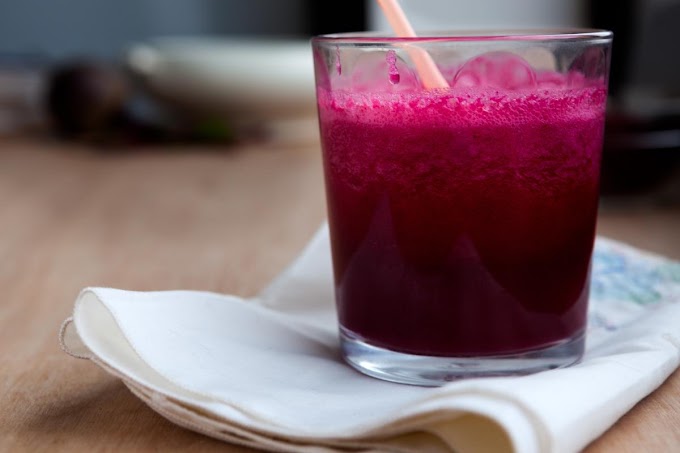So how do you create a healthy sauce for chicken and rice without sacrificing flavor? The answer lies in using natural ingredients, keeping fats and sugars in check, and opting for fresh herbs and spices to build a sauce that's not only good for you but also delicious. In this blog, we'll explore several healthy sauce options and tips for crafting them at home.
The Key Components of a Healthy Sauce
Before diving into specific sauce recipes, it's important to understand the essential components that make a sauce both healthy and tasty. These ingredients can be mixed and matched based on your taste preferences and dietary needs.
1. Base Liquids
The liquid you choose as the base for your sauce plays a crucial role. Here are some healthy options:
Broth or Stock: A low-sodium chicken or vegetable broth is a fantastic base. It’s flavorful, light, and adds depth to your sauce without adding extra calories.
Greek Yogurt: Plain Greek yogurt can serve as a creamy, tangy base that’s packed with protein. It's a great substitute for mayonnaise or sour cream, making your sauce lighter and healthier.
Coconut Milk: For those who prefer a slightly sweeter or richer base, light coconut milk is a great choice. It’s full of good fats and pairs beautifully with chicken and rice, particularly in Asian-inspired sauces.
Tomato Puree or Crushed Tomatoes: Tomatoes are low in calories and rich in antioxidants like lycopene. Use unsweetened tomato puree to add richness without any added sugars or unhealthy fats.
2. Healthy Fats
While fats often get a bad rap, some fats are essential for health, and including them in moderate amounts will help make your sauce more satisfying:
Olive Oil: Extra virgin olive oil is a heart-healthy fat rich in antioxidants and anti-inflammatory properties. Just a small drizzle can enhance the sauce's texture and flavor.
Avocado: If you’re looking for a creamy texture, blending avocado into your sauce offers a dose of healthy monounsaturated fats along with a silky, rich feel.
3. Herbs and Spices
Herbs and spices not only add tons of flavor without the need for extra salt or fat, but they also come with their own unique health benefits:
Garlic and Ginger: Both garlic and ginger are packed with anti-inflammatory and immune-boosting properties. They add warmth and spice to any sauce.
Turmeric: This bright yellow spice has powerful antioxidant properties and gives a unique earthy flavor to your sauce. It works especially well in Mediterranean and Indian dishes.
Fresh Herbs: Cilantro, parsley, basil, or mint can add a burst of freshness and brightness to your sauce.
4. Acidity
A dash of acidity helps brighten up the sauce, enhancing flavors and balancing out the richness from fats and proteins:
Lemon or Lime Juice: Freshly squeezed citrus juice can add a sharp, tangy punch to your sauce.
Apple Cider Vinegar or Balsamic Vinegar: Both vinegars are low in calories but offer a lot of flavor. Apple cider vinegar, in particular, has a mild sweetness that works well in savory sauces.
5. Thickening Agents
To give your sauce the right consistency, you may need to add a thickening agent:
Cornstarch: A small amount of cornstarch mixed with water can thicken sauces without adding many calories.
Arrowroot Powder: This natural thickener is often used as a healthier alternative to cornstarch, especially in gluten-free diets.
Healthy Sauce Recipes for Chicken and Rice
Now that you know the essential components of a healthy sauce, let’s explore some easy-to-make options for your next chicken and rice meal.
1. Lemon Garlic Yogurt Sauce
This light and tangy sauce pairs wonderfully with both grilled or baked chicken and rice. It adds a Mediterranean flair while keeping things light and healthy.
Ingredients:
½ cup plain Greek yogurt
1 tablespoon olive oil
1 garlic clove, minced
Juice of 1 lemon
1 tablespoon chopped fresh parsley
Salt and pepper to taste
Instructions:
In a bowl, combine the Greek yogurt, minced garlic, and lemon juice.
Drizzle in the olive oil while stirring to create a smooth consistency.
Add the parsley and season with salt and pepper to taste.
Serve over your chicken and rice for a refreshing, zesty kick.
2. Coconut Curry Sauce
This flavorful sauce is rich but not heavy, thanks to the light coconut milk. It brings a taste of Southeast Asia to your plate.
Ingredients:
1 cup light coconut milk
1 tablespoon red curry paste
1 teaspoon turmeric powder
1 garlic clove, minced
1 tablespoon lime juice
Salt and pepper to taste
Instructions:
In a small saucepan, heat the coconut milk over medium heat.
Stir in the red curry paste, turmeric, and garlic, simmering for 5-7 minutes.
Add the lime juice and season with salt and pepper.
Pour the sauce over chicken and rice for a fragrant, creamy finish.
3. Tomato Basil Sauce
This tomato-based sauce is light, fresh, and loaded with nutrients from the tomatoes and basil.
Ingredients:
1 cup unsweetened tomato puree
1 tablespoon olive oil
1 garlic clove, minced
½ cup chopped fresh basil
Salt and pepper to taste
Instructions:
In a saucepan, heat olive oil over medium heat and sauté the garlic until fragrant.
Add the tomato puree and simmer for 10 minutes.
Stir in the fresh basil and season with salt and pepper.
Drizzle over grilled chicken and rice for a simple yet flavorful sauce.
Tips for Customizing Your Sauce
Creating the perfect sauce for your chicken and rice isn’t a one-size-fits-all formula. Here are a few tips to help you customize your sauce to suit your tastes and dietary needs:
1. Adjust the Heat
If you like a bit of spice, add ingredients like chili flakes, cayenne pepper, or chopped fresh chili peppers. For a milder sauce, stick to sweet spices like paprika.
2. Add More Veggies
For extra nutrition, consider adding finely chopped vegetables like bell peppers, onions, or spinach into your sauce. They’ll boost the fiber content and add more texture.
3. Experiment with Different Herbs
Depending on the cuisine you’re aiming for, switch up the herbs. For instance, use rosemary and thyme for a more Italian-inspired dish, or cilantro and mint for Middle Eastern flavors.
4. Lower Sodium
Be mindful of the salt content, especially if you’re using pre-made broths or tomato sauces. Opt for low-sodium versions or make your own broth to control the salt levels.
Conclusion
Making a healthy sauce for chicken and rice is easier than you might think. By using wholesome ingredients like olive oil, Greek yogurt, fresh herbs, and natural spices, you can craft a sauce that’s delicious, nutrient-dense, and perfect for any meal. Whether you're going for a tangy lemon garlic yogurt sauce, a creamy coconut curry, or a simple tomato basil blend, the possibilities are endless. Best of all, these sauces are versatile, allowing you to modify and adapt them to fit your taste and nutritional goals. So, the next time you prepare chicken and rice, give one of these healthy sauces a try!








Social Plugin